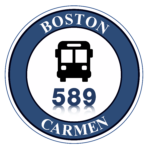
Red Line trains once had two workers aboard
December 11, 2015
Boston Globe | By Matt Rocheleau and Steve Annear | December 10, 2015

The head of the MBTA’s largest labor union said that Thursday’s runaway Red Line train incident could have been stopped sooner if the MBTA had two workers aboard — as the agency did until a few years ago — instead of just one.
The Red Line cut down to one worker in the spring of 2012, a move intended to save the T about $1.3 million annually, agency documents said.
“If there was a second employee on the train, they would have had, and been equipped with, the knowledge and ability to bring this train to a safe stop,” said James O’Brien, president of the Boston Carmen’s Union.
On Thursday, a Red Line train traveled for multiple stops with no one at the controls after the operator stepped out. Governor Charlie Baker said the operator was checking a signal. Transportation Secretary Stephanie Pollack said the investigation was focusing on human error.
MBTA spokesman Joe Pesaturo said in an e-mail that the incident “had nothing to do with the deployment of personnel.”
He said the second worker on Red Line trains served in “the unnecessary position of train attendant.”
“Train attendants were stationed in the 4th car and only had the responsibility of opening/closing doors,” he wrote.
“Single Person Train Operation is standard operating procedure in subway systems around the country, and the MBTA has a very good safety record since the implementation of SPTO on the Red Line more than three years ago,” Pesaturo wrote.
Pollack said at a news conference that “if safety procedures are followed properly,” then only a single operator is needed on each train.
But O’Brien said the train attendant could have noticed there was no operator sooner and could have radioed for help and pulled the emergency brake to stop the train. The second worker could have also helped communicate with passengers to keep them calm and to assist if the train needed to be evacuated.
“A second person on this train definitely would have helped today,” O’Brien said. “Safety is our No. 1 priority. We’re just very happy no one got hurt.”
Single-person train operation was introduced on the Blue Line in 1996 and adopted on the Orange Line in 2010.
In a presentation in 2011 as the T was considering making the switch on the Red Line, the agency described single-person train operation as “the industry standard for rapid transit systems” worldwide.
“The motorperson will perform all functions performed by both motorpersons and train attendants, including door operation and station announcements,” the presentation said. “The Federal Transit Administration has recommended this approach to minimizing operating costs while maintaining service.”
At the same time, the T said it planned to assign more personnel to station platforms to increase security and to help passengers. The T also said it would install more monitors, mirrors, and cameras to help with security and so that train operators could see more clearly whether doorways were clear to close.
The agency also said it would retrain operators.
Even though the move was expected to save money, the T said it would redeploy employees to other duties. O’Brien said the move did not ledd to layoffs.
“Some of the proposed savings will be reinvested into improved frequency, which will reduce passenger wait time, crowding, and improve passenger comfort,” T officials explained in the presentation.
Matt Rocheleau can be reached at matthew.rocheleau@globe.com. Follow him on Twitter @mrochele


Recent Comments